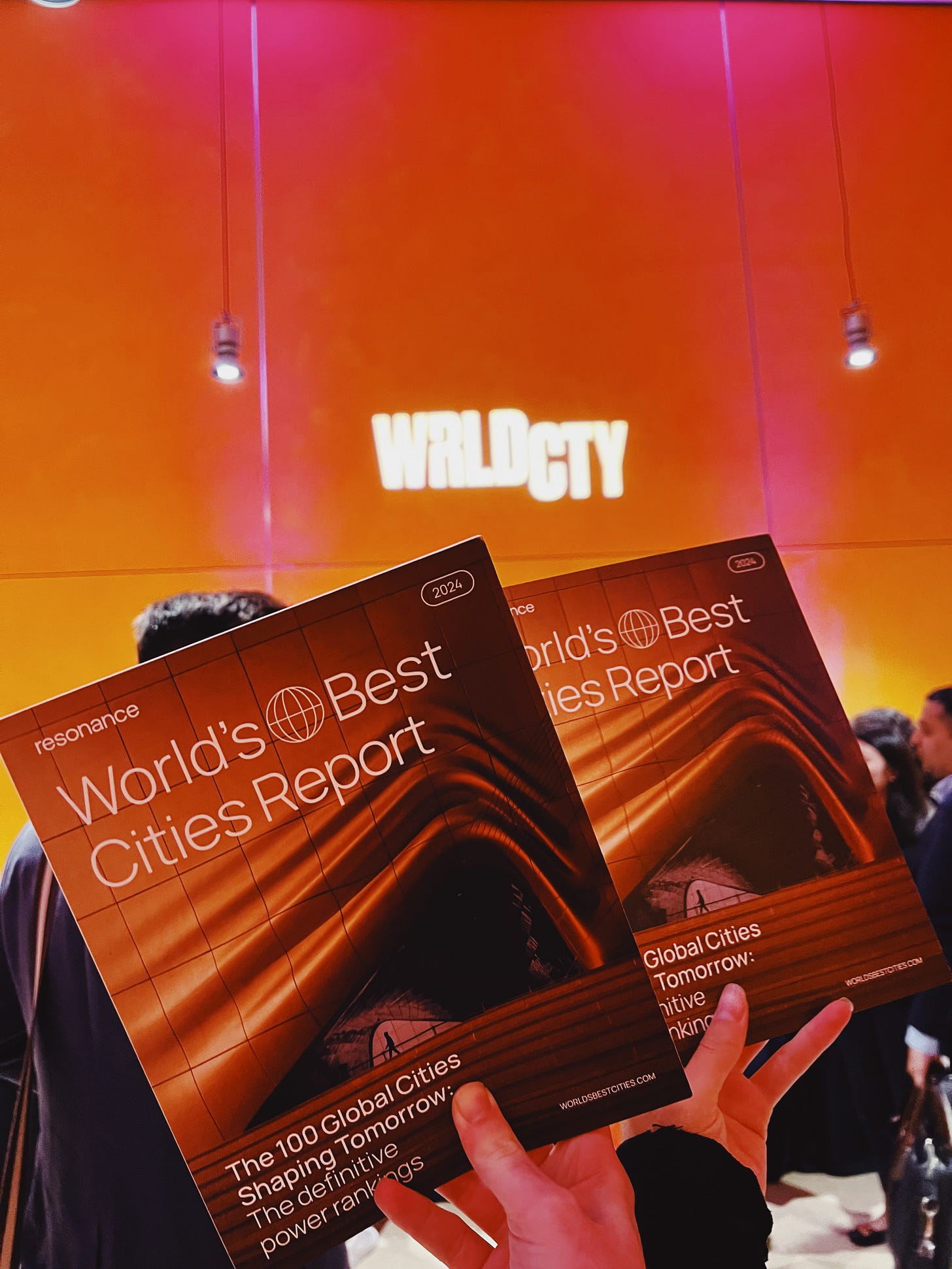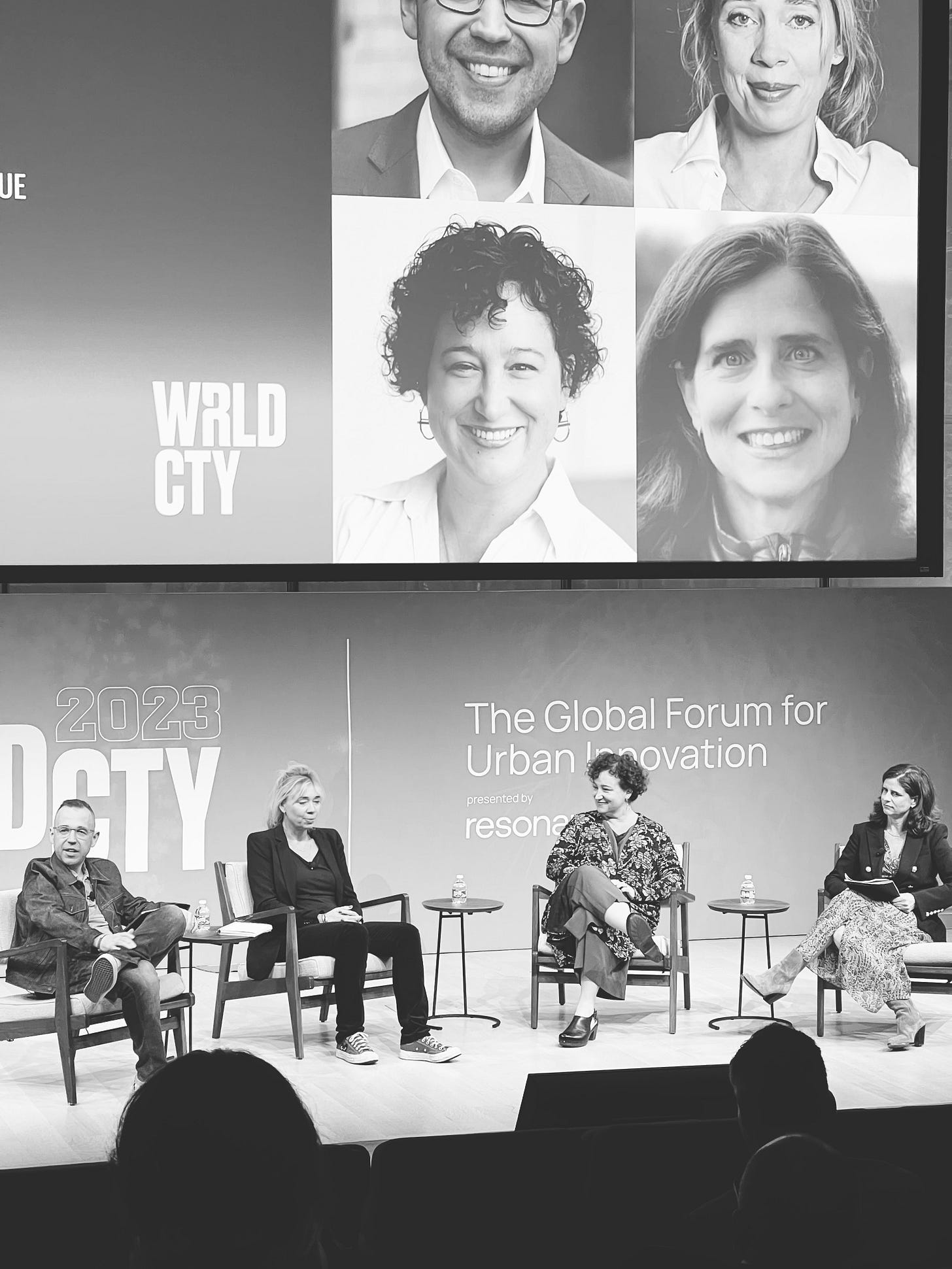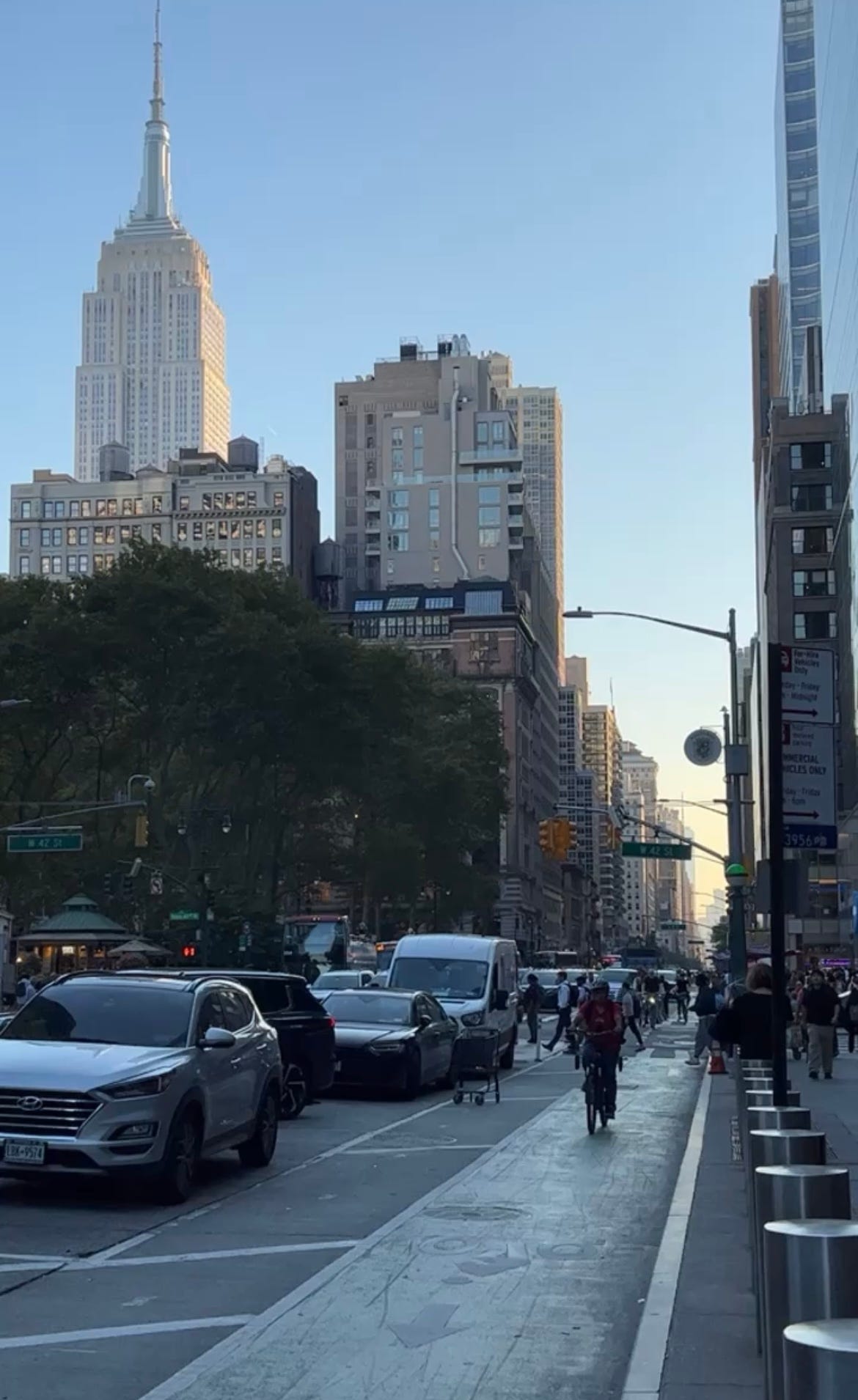Innovating Our Cities Will Be a Tough, Creative Challenge, but Not an Impossible One
Desk Note 18: a translation of my hastily scribbled notes from the WRLDCTY global innovation forum
Hello, again, readers!
You charming, martini-sipping, black turtleneck-wearing, big-city intellectuals;
I’ve missed you.
And welcome to all of my new readers. Over 100 of you read my last desk note featuring DC’s scandi-inspired law student extraordinaire, Maddie Rusenko.
I write that with immense gratitude to each one of you who took the time to read Desk Note 17. We’ve come a long way from when le blog began in May.
I am especially proud of Maddie for her vulnerability and willingness to share tough lessons she’s learned from the past year. To paraphrase Hamilton, your skill with the quill (& gavel) is undeniable, Maddie.
This month, I promise to you all, and to myself, to write more.
I also promise to take a cue from Jeremiah Brent and dress up as a Sagittarius for Halloween next year. I make no promises, however, on how many times I remind you that I am a travel-loving Sagittarius between now and then.
Speaking of travel, many worldwide landed in the city this weekend for the 52nd installment of New York City’s annual marathon. 50,000 qualified athletes raced through 26.2 miles of our ordinarily taxi-filled streets on a Sunday morning, beginning on Staten Island, crossing all five boroughs before finishing at beloved Central Park.
The energy of the day’s events captures the attention of the entire city and produces joyful goosebumps on a level of magnitude that New Yorkers and visitors alike can relate to on only a few days throughout the year.
Marathon Sunday is truly my favorite day of the year in New York City.
Last month I gathered with designers and urban planners for a metaphorical race of sorts.
One where we discussed design challenges and solutions that go the distance.
If yesterday was the 52nd edition of NYC’s marathon, then our forum’s challenge was to urgently address the most pressing issues facing the city to ensure we have a more resilient city come time for the 62nd, 102nd, or 422nd marathon.
At WRLDCTY: Global Forum for Urban Innovation, I heard from a variety of leaders who shared bold examples of their city plans and designs. The speakers highlighted present-day success stories, past failures, and future ambitions on urban hot topics ranging from affordable housing to circular economies.
Two days at the Times Center and seventeen pages of hastily scribbled notes later, I’ve attempted to summarize some takeaways from just a few of the many lessons I learned at the forum - with the hope that you’ll find ways to relate each back to your own city, be it New York or elsewhere.

We can make walking comfortable in a bustling, big city.
Like many of us, I enjoy walking to and from places as much as possible in the city. Walkability is one of the biggest factors why I chose to live in New York City. Other American cities require significant and costly improvements to pedestrian infrastructure to make them as walkable as NYC.
But will better infrastructure alone solve the issue across the US?
Jeff Speck posed the critical but perhaps forgotten question that comes up after a city has spent a copious amount of time and money connecting its sidewalks: how do you get people to walk on them?
The key is good urban design rooted in, as Speck suggested, four practicalities.
A walk must be useful, safe, comfortable, and interesting.
One way that Jeff, who is the principal of his own urban design and consulting firm, Speck & Associates, believes can make a walk comfortable is to give it spatial definition. He argued we should design figural space with residual buildings instead of creating figural buildings with residual space.
This simple shift in urban design mentality is the difference between one’s walk in a European city center and that through the so-called Towers in the Park. I bet you’ll subconsciously notice it next time you go for a walk on your street.
For more information on his theory and practice, read Jeff’s book, Walkable City.
Nature vs. city? Let’s flip the script to design for both nature and the city.
Signe Kongebro is an architect from Copenhagen, Denmark where she leads Henning Larsen’s global urban design practice. At WRLDCTY, she participated in a panel on getting to net zero design with Keefe Harrison, Collen Litkenhaus Tague, and Steven Pedigo.
Back home in Denmark, a country that has long led the movement to decarbonize the construction and design industry, Signe said the government enacted a strict policy that minimizes the impact of building design on the increasingly fragile climate. By law, you can not get a building permit approved if your proposed building emits above an allowable threshold of embodied carbon or other greenhouse gases.
But not every country agrees that this is the logical path forward to combat climate change. In fact, it is an extremely (and editor’s note: unfortunately so) polarizing issue. So while we wait for governments to enact change (hurry up, please), Signe turned our attention to the role we can actively play as designers to get to net zero emissions sooner than we think.

Like Jeff Speck’s point above, it too involves a perspective shift.
Instead of a dualistic nature vs. the city approach…we must find ways to imagine combinations of both nature and city in design.
One such example that Signe and her team are working on is the world’s largest mass timber development, set to be built in Stockholm.
Explore the renderings and learn more from this dezeen article.
AI Will Not Mean the Death of the Architect
AI and ChatGPT have been some of the biggest disruptors so far in 2023. The impact is being felt across all industries. I guarantee you’ve heard at least one person say that they asked ChatGPT to write their award speech for them.
Yes, it is a helpful tool for checking grammar, photoshopping images, and researching topics, but what does artificial intelligence mean for the design industry?
Is it possible that we will one day live and work in a building designed entirely by AI? Is it capable of high-level architectural and engineering design? Is it ethical? Who becomes responsible if an AI-designed building fails?
These are the questions that Elisa Orlanski Ours, Shane Burger, Steven Cornwell, Claire Johnston, Alex Baum, Siqi Zhu, and Andrew Witt set out to answer in a lively debate-style panel.
In short, the majority of the audience and I sided with Elisa and the architects at the conclusion of the (dramatic and comedic) debate.
While artificial intelligence tools can and should be used to save time in the same way that we introduced AutoCAD technology into design, they will never replace the architect entirely.
How could ChatGPT possibly design for human emotion and healthy, livable cities, if it doesn’t actually feel emotion and experience the urban environment like we do? It can’t…atleast not on its own.
Architects, designers, and planners must remain involved, and they too must bear some level of responsibility for the design output with the use of technology.
What do you think, reader?
And before you ask; no, ChatGPT did not write this desk note.

I left the final session of the forum feeling inspired, grateful, and ready to create the future of cities together. As I walked across Midtown to meet a friend for dinner afterward, I paused to look up and down 6th Avenue at the street life in motion - bicycles, commuters, birds, and buildings all set behind a backdrop of blue skies with Bryant Park and the Empire State Building off in the distance. How wonderful, I thought, to play a role in creating our great urban fabric. And how crucial, I believe, must our responsibility as planners and designers be to innovate for our cities’ future sake.
Like running 26.2 miles, innovating our cities will be a tough, creative challenge, but not an impossible one.
I know I’ve only scratched the surface with this short summary of three of the talks, but I hope it has sparked some curiosity. Let me know in the comments below if there are any you want to learn more about.
Thank you to Chris Fair and the Resonance team for the opportunity to attend. To see the full lineup and learn more about the forum, visit WRLDCTY.com.
ECF





